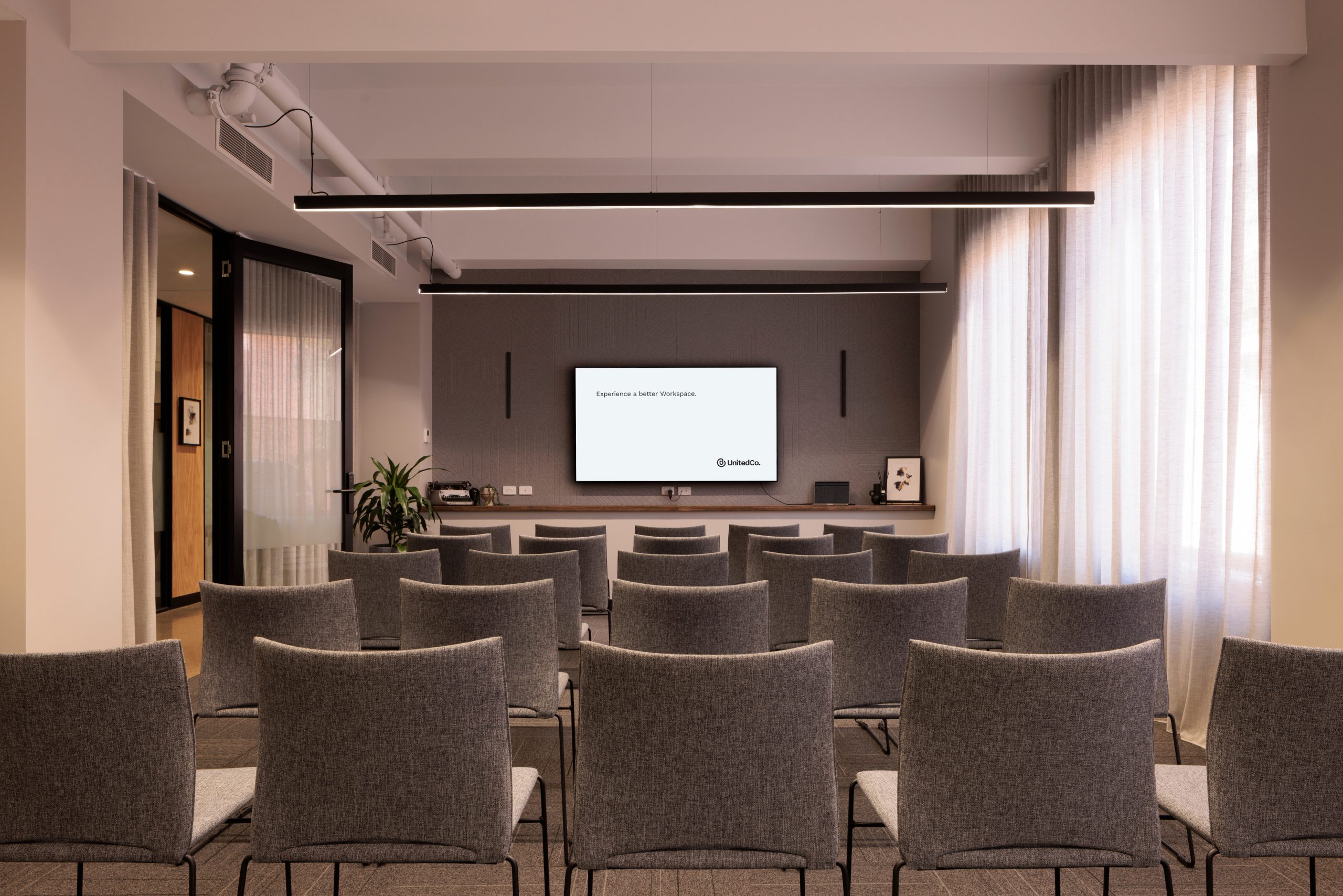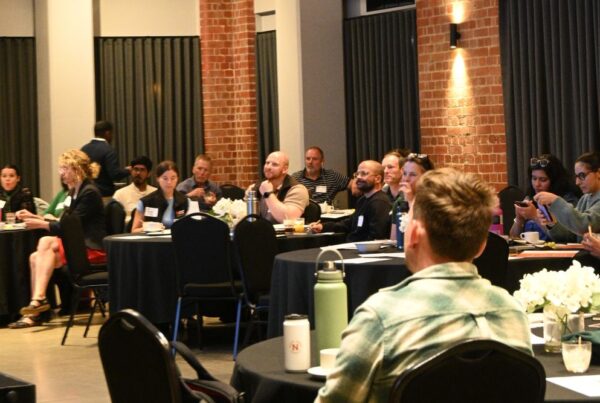
Corporate training refers to the process of educating and developing employees within a company to improve their skills, knowledge, and performance, ultimately achieving business goals. This systematic approach to learning and development helps employees acquire new skills, update their existing knowledge, and enhance their performance in their current roles or prepare for future roles.
Corporate training can take many forms, including on-the-job training, classroom sessions, e-learning, workshops, seminars, coaching, and mentoring. It covers a wide range of topics, such as technical skills, soft skills, leadership, management, compliance, and industry-specific knowledge.
The ultimate goal of corporate training is to improve the productivity, efficiency, and effectiveness of the workforce, leading to better business outcomes for both the company and the employees. In this article, United Co. shares five tips for making corporate training more effective and engaging, aligning with your interests in enhancing marketing management strategies and improving overall business performance.
What is the most effective way to deliver corporate training?
The most effective way to deliver corporate training involves a blended approach that combines various methods to cater to different learning styles and needs. Here are several reasons why corporations need to implement a comprehensive training program.
1. Ensure Proper Use
Implementation of new systems, processes, or tools often requires employees to learn new skills and ways of working. Training helps to ensure that employees understand how to use these new systems, processes, or tools properly, reducing errors and improving efficiency and effectiveness.
2. Increased Adoption
Employees are more likely to adopt and use new systems, processes, or tools when they are trained properly. This reduces resistance to change and increases the likelihood of successful implementation.
3. Improve Performance
Training improves employee performance by providing them with the skills and knowledge they need to perform their jobs effectively. This can lead to increased productivity, improved quality of work, and better customer satisfaction.
4. Cost Smart
Poorly trained employees can make mistakes that cost time and money. Training helps to reduce errors and improves efficiency, saving both time and money in the long run.
5. Ensure Compliance
Many industries have regulatory requirements that require employees to be trained on certain topics. Failure to comply with these requirements can result in fines, legal action, or loss of license. Training ensures that employees are aware of these requirements and are in compliance with them.
Training is crucial in implementation as it helps employees to adapt to new changes, perform their job functions more effectively, and ensure compliance with regulations, ultimately leading to the success of the implementation project.
Read More A Guide to Performance Management for Remote Teams
5 Tips for Making Corporate Training More Effective and Engaging
1. Make it Interactive
People tend to learn better when they are actively involved in the learning process. Incorporating interactive elements such as group discussions, quizzes, and hands-on exercises in dedicated training spaces can help increase engagement and retention of the material being taught.
2. Use Real-Life Scenarios
To make the training more relatable and applicable to the real world, use relevant scenarios and case studies that mirror real-life situations. This allows learners to see how the concepts they are learning apply to their work and can help them better understand the importance of what they are learning.
3. Keep it Bite-Sized
People have short attention spans, and long training sessions can quickly become tedious and overwhelming. Break up the training into bite-sized chunks, to keep learners engaged and focused.
4. Personalize the Learning
Everyone learns differently, so tailoring the training to individual learning styles can help improve its effectiveness. Incorporate a variety of learning styles, such as visual aids, audio, and hands-on exercises, to cater to the different learning preferences of your audience. This is an important consideration to ensure successful learning for all of your team members.
5. Follow-up and Reinforcement
Learning doesn’t stop after the training session is over. Follow up with learners after the training to reinforce the concepts taught and provide opportunities for additional learning and development. This can include quizzes, surveys, and follow-up training sessions.
Read More 9 Benefits of Technology That Can Make Your Work Productive
Is training beneficial to employees?
There are a host of reasons why training is beneficial to employees. Here are a few:
Skill Development
Corporate training helps employees develop new skills or enhance existing ones, which can make them more efficient and effective in their roles. These new skills can also help employees advance in their careers and take on new responsibilities.
Increased Job Satisfaction
When employees receive training that enables them to perform their jobs better, they tend to be more satisfied with their work. This increased job satisfaction can lead to higher employee engagement and retention.
Improved Performance
Corporate training can improve employee performance by teaching them new techniques, tools, and best practices that they can apply to their jobs. This can lead to higher productivity, better quality work, and improved customer satisfaction.
Career Development
Many corporate training programs offer career development opportunities such as leadership training, management training, or specialized technical training. These programs can help employees acquire new skills and knowledge that can lead to career advancement.
Competitive Advantage
Companies that invest in employee training and development tend to be more competitive and successful. They are better able to adapt to changing business environments and can offer higher-quality products and services. As a result, employees who receive corporate training can help their companies gain a competitive advantage in the marketplace.
Where can you host corporate training?
There are several options for hosting corporate training, including:
- In-person: In-person training can be held at the company’s physical location, such as a conference room or training room. This allows for direct interaction between the trainer and the trainees and can be especially effective for hands-on training. Some companies choose to host training sessions off-site. A different environment will often take the focus away from the usual everyday activities. A change of place encourages a change of mind.
- Online: Online training, also known as e-learning, can be delivered via a learning management system (LMS) or other online platform. This allows employees to complete training at their own pace and on their schedule and can be especially effective for remote or distributed teams.
- Hybrid: Hybrid training combines in-person and online training, allowing employees to participate in training sessions both in-person and remotely. This can be a good option for companies with both remote and in-office employees.
- Outsourced: Some companies outsource their training needs to specialized training providers who offer training programs that are customized to their specific needs. This can be an effective way to provide high-quality training that is tailored to the company’s needs.
Ultimately, the best option for hosting corporate training depends on the specific needs of the company and the employees being trained. If your company doesn’t have a dedicated space for training or you like to host a training session off-site, hosting corporate training in a shared workspace is a great option. Shared workspaces and coworking spaces can also offer many benefits such as modern amenities such as high-speed internet, audio-visual equipment, and comfortable seating, which can make training sessions more productive and engaging.
Shared workspaces will offer a range of different meeting rooms, dedicated training rooms, workshop spaces, and event spaces. By having a distraction-free environment that allows employees to focus on the training session without the interruptions that may occur in a traditional office environment, members can truly get the most out of their sessions.
Read More How to Drive Business Growth Through Corporate Events
What makes a good training room?
A good training room should be designed to facilitate effective learning and provide a comfortable, inclusive, and conducive environment for all attendees. Here are some features that can make a training room a great place for learning:
- Comfort: Attendees should be able to sit comfortably during the training session. The seating should be ergonomically designed to prevent discomfort or back pain during long sessions. The temperature in the training room should be comfortable for attendees. Ask your training venue to adjust the temperature to suit your needs and to ensure the comfort of your attendees.
- Good Lighting: A well-lit training room helps to create an environment that promotes learning. The room should have ample natural light, and artificial lighting should be adjustable and evenly distributed throughout the space. Additionally, window coverings or blinds should be available to control the amount of light entering the room.
- Adequate Space: The training room should have enough space to accommodate the number of attendees, with sufficient room for desks or tables, chairs, and equipment. This can help attendees stay focused and engaged during the training session. If you are hosting a full-day training session or event over multiple days. Ensure there are break-out spaces and lounges that your attendees can make use of during their breaks.
- Audio-Visual Equipment and Presentation Aids: A good training room should be equipped with high-quality audio-visual equipment such as projectors, screens, sound systems, and microphones. This equipment should be user-friendly and reliable. There should be backup equipment available and onsite tech support in case of any technical issues that may occur on the day of the training session. If your training includes workshops and brainstorming sessions, you can ask your venue to provide extra whiteboards, butcher paper, notes, and markers. If you are presenting to a larger group, ask the venue if there are microphones and or a lectern available to ensure your message is loud and clear.
- High-Speed Internet: The training room should have reliable and fast internet connectivity. This can help attendees access online resources and participate in virtual training sessions.
- Convenient Location: A training room should be located in a convenient and accessible location. It should be easy to find, easily accessible by public transport, and have ample parking facilities.
- Accessibility: Consider those with disabilities or other needs. Make sure your training rooms and facilities are accessible for all your attendees.
In short, a good training room should provide a comfortable, well-lit, and spacious environment with high-quality audio-visual equipment and be accessible to everyone to ensure that attendees can focus on the learning experience, and get the most out of their training session.
Deliver Your Corporate Training at United Co.
United Co. provides high-quality training rooms in Melbourne for businesses and event organizers. Our training rooms offer ample natural light, advanced technology, and a flexible floor plan. They are designed to enhance communication, engage audiences, and cater to various corporate events, from team collaborations and brainstorming sessions to seminars and networking events. Booking is made easy with options to hire by the hour, full day, or multiple days.
United Co. is the perfect solution for those in need of a professional and functional space for their next corporate training session. If you would like to know more about hosting training sessions at United Co., get in touch today!




